Military Knowledge: Saab JAS 39 Gripen Fighter Jet
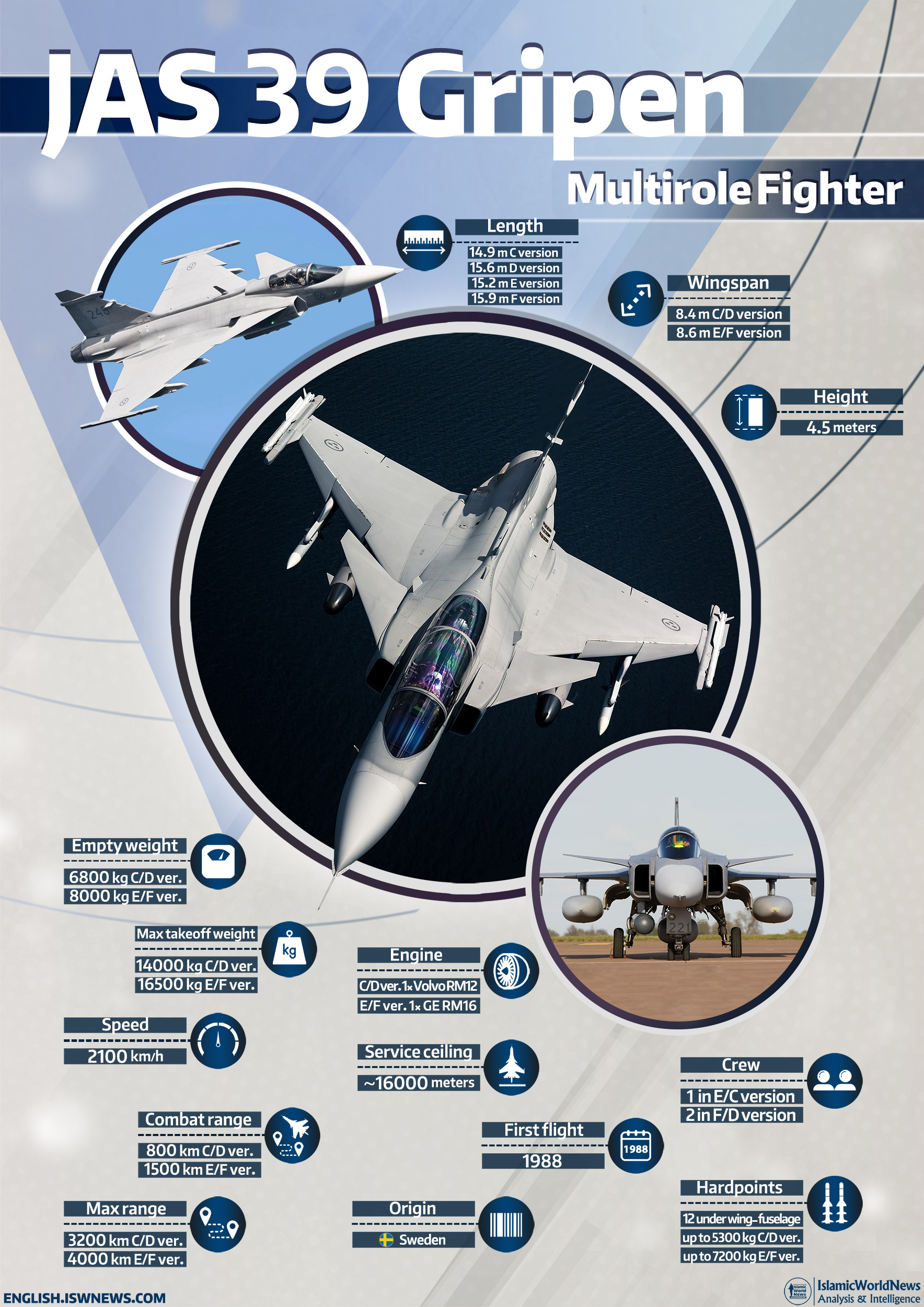
SAAB JAS 39 Gripen is a light single-engine supersonic multirole fighter jet manufactured by the Swedish aerospace and defense company Saab AB, And has been in service with the Swedish Air Force since 1996. JAS 39 Gripen is fully comply with NATO standards.
History
In the late 1970s, Sweden sought to replace its aging Saab 35 Draken and Saab 37 Viggen. Early proposals included the Saab 38, also called B3LA, intended as an attack aircraft and trainer, and the A 20, a development of the Viggen that would have capabilities as a fighter, attack and sea reconnaissance aircraft. Several foreign designs were also studied, including the General Dynamics F-16 Fighting Falcon, the McDonnell Douglas F/A-18 Hornet, the Northrop F-20 Tigershark and the Dassault Mirage 2000. Ultimately, the Swedish government opted for a new fighter to be developed by Saab.
On 30 June 1982, with approval from the Riksdag, the FMV issued contracts worth SEK 25.7 billion to Saab, covering five prototypes and an initial batch of 30 production aircraft. By January 1983, a Viggen was converted to a flying test aircraft for the JAS 39’s intended avionics, such as the fly-by-wire controls. The JAS 39 received the name Gripen (griffin) via a public competition, which is the heraldry on Saab’s logo.
Saab launched the first Gripen on April 26, 1987, on the occasion of the company’s 50th anniversary. This company managed to make the first flight in 1988 by developing the JAS 39 design. In 1993, its first aircraft was delivered, which was able to enter the service of the Swedish Air Force in 1996.
For the international marketing of this aircraft, Saab made joint efforts with aerospace companies outside of Sweden. In the export market, early Gripen models achieved moderate success with sales to countries in Central Europe, South Africa, and Southeast Asia.
A 2007 report by the European Union Institute for Security Studies stated the total research and development costs of Gripen were €1.84 billion. According to a study by Jane’s Information Group in 2012, the Gripen’s operational cost was the lowest among several modern fighters; it was estimated at $4,700 per flight hour. The Swedish Ministry of Defense estimated the cost of the full system, comprising 60 Gripen E/F, at SEK 90 billion distributed over the period 2013–42. The Swedish Armed Forces estimated that maintaining 100 C/D-model aircraft until 2042 would cost SEK 60 billion (€6.6 billion in 2013), while buying aircraft from a foreign supplier would cost SEK 110 billion (€12.1 billion).
Design
The JAS 39 Gripen fighter jet is a light single-engine supersonic multirole fighter jet with a delta wing and canard configuration with relaxed stability design and fly-by-wire flight controls. The engine used in this fighter jet is called Reaktionsmotor 12 (RM12), which is a licence-built derivative of the General Electric F404−400. The RM12 engine is produced by the Swedish company Volvo Aero, which was sold to the English company GKN Ltd in 2012.
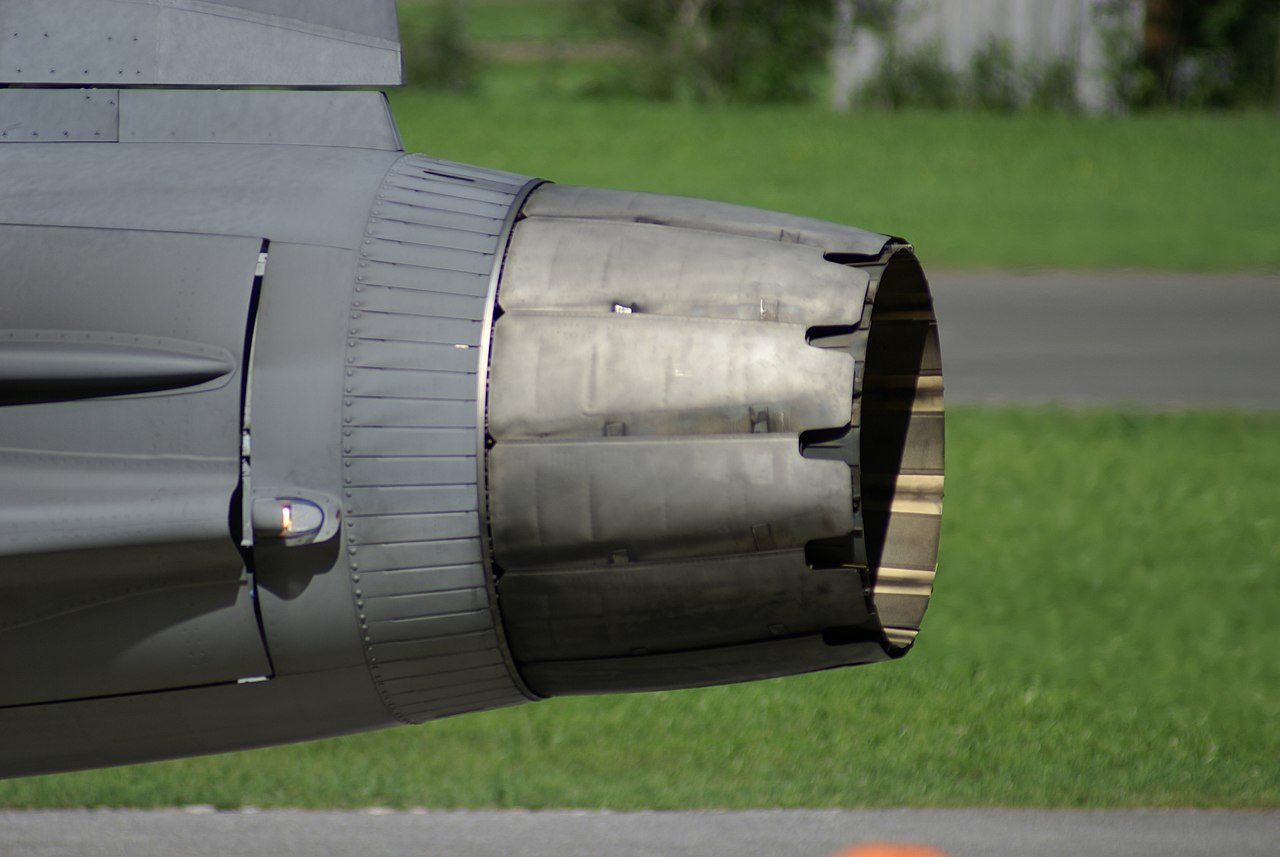
The Gripen fighter jet uses the PS-05/A radar, which is a 156 kg pulse doppler radar currently installed on the A, B, C and D models. The PS-05/A radar works in the 8-10 GHz band and has an energy output of 1 kW (more than 10 kW maximum output) and can automatically identify, locate and track multiple targets in the upper and lower spheres, land and sea or air in any weather condition. The PS-05/A family radars were developed by Ericsson in collaboration with GEC-Marconi.
Variants and upgrades
- Gripen A, or JAS 39A: initial single seat version that entered service with the Swedish Air Force in 1996. A number have been upgraded to the C standard or been converted to 39D at a 2:1 ratio.
- Gripen B, or JAS 39B: two-seat version of the 39A for training, specialised missions and type conversion. To fit the second crew member and life support systems, the internal cannon and an internal fuel tank were removed and the airframe lengthened 0.66 m.
- Gripen C, or JAS 39C: NATO-compatible single seat version with extended capabilities in terms of armament, electronics, etc. Can be refuelled in flight. Variant was first deliveried on 6 September 2002.
- Gripen D, or JAS 39D: two-seat version of the JAS 39C, with similar alterations as the JAS 39B.
- Gripen NG: Follow-on the Gripen Demo technology demonstrator. Changes from the JAS 39C include the more powerful F414G engine, Raven ES-05 AESA radar, increased fuel capacity and payload, and two additional hardpoints. These improvements reportedly increased costs to an estimated 24,000 Swiss Francs (US$27,000) per hour, and the flyaway cost to 100 million Swiss Francs (US$113M).
- Gripen E, or JAS 39E: single-seat production version developed from the Gripen NG program, priced at US$85 million per unit. Sweden and Brazil have ordered the variant. Brazil’s designation for this variant is F-39E.
- Gripen F, or JAS 39F: two-seat version of the JAS 39E. Eight ordered by Brazil, to be developed and assembled in Brazil; planned for pilot training and combat, being optimized for back seat air battle management, with jamming, information warfare and network attack, besides weapon system officer and electronic warfare roles Brazil’s designation for the variant is F-39F.
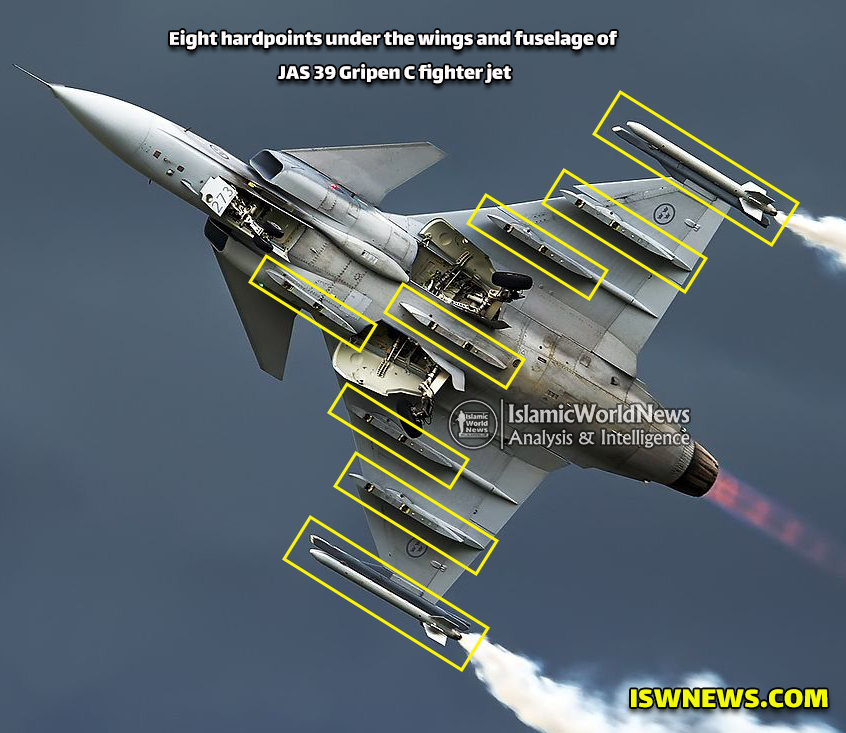
Specifications
JAS 39C/D specifications:
Crew: 1 JAS 39C / 2 JAS 39D
Length: 14.9 m JAS 39C / 15.6 m JAS 39D
Wingspan: 8.4 m
Height: 4.5 m
Empty weight: 6,800 kg
Max takeoff weight: 14,000 kg
Fuel capacity: 3,000 L (internal); 3,500 L (external)
Payload: 5,300 kg
Powerplant: 1× Volvo RM12 afterburning turbofan engine, 54 kN thrust dry, 80.5 kN with afterburner
Maximum speed: Mach 2 (2,100 km/h)
Combat range: 800 km
Ferry range: 3,200 km
Service ceiling: 15,240 m (50,000 ft)
Armament
Guns: 1× 27 mm Mauser BK-27 revolver cannon with 120 rounds (single-seat models only)
Hardpoints: 8 (two hardpoints under fuselage, two under each wing, and one on each wing tip, with one of these for FLIR / ECM / LD / Recon pod) with a capacity of 5,300 kg.
JAS 39E/F specifications:
Crew: 1 JAS 39E / 2 JAS 39F
Length: 15.2 m JAS 39E / 15.9 m JAS 39F
Wingspan: 8.6 m
Height: 4.5 m
Empty weight: 8,000 kg
Max takeoff weight: 16,500 kg
Fuel capacity: 4,360 L (internal); 4535 L external with 3 drop tanks
Payload: 7,200 kg
Powerplant: 1× General Electric F414-GE-39E (RM16) afterburning turbofan engine, 61.83 kN thrust dry, 98 kN with afterburner
Maximum speed: 2,100 km/h
Combat range: 1,500 km
Ferry range: 4,000 km
Service ceiling: 16,000 m (52,000 ft)
Armament
Guns: 1 × 27 mm Mauser BK-27 revolver cannon with 120 rounds (single-seat models only
Hardpoints: 10 (three hardpoints under fuselage, two under each wing, one on each wing tip, and one dedicated for FLIR / LD / Recon pod) with a capacity of 7,200 kg.
Avionics
Selex ES-05 Raven AESA radar
Skyward-G IRST system
Air-to-air and air-to-surface tactical data link system
Wide Area Display (WAD) (single screen display)
Targo helmet mounted display (HMD)
ANVIS advanced night vision system/head up display (HUD)

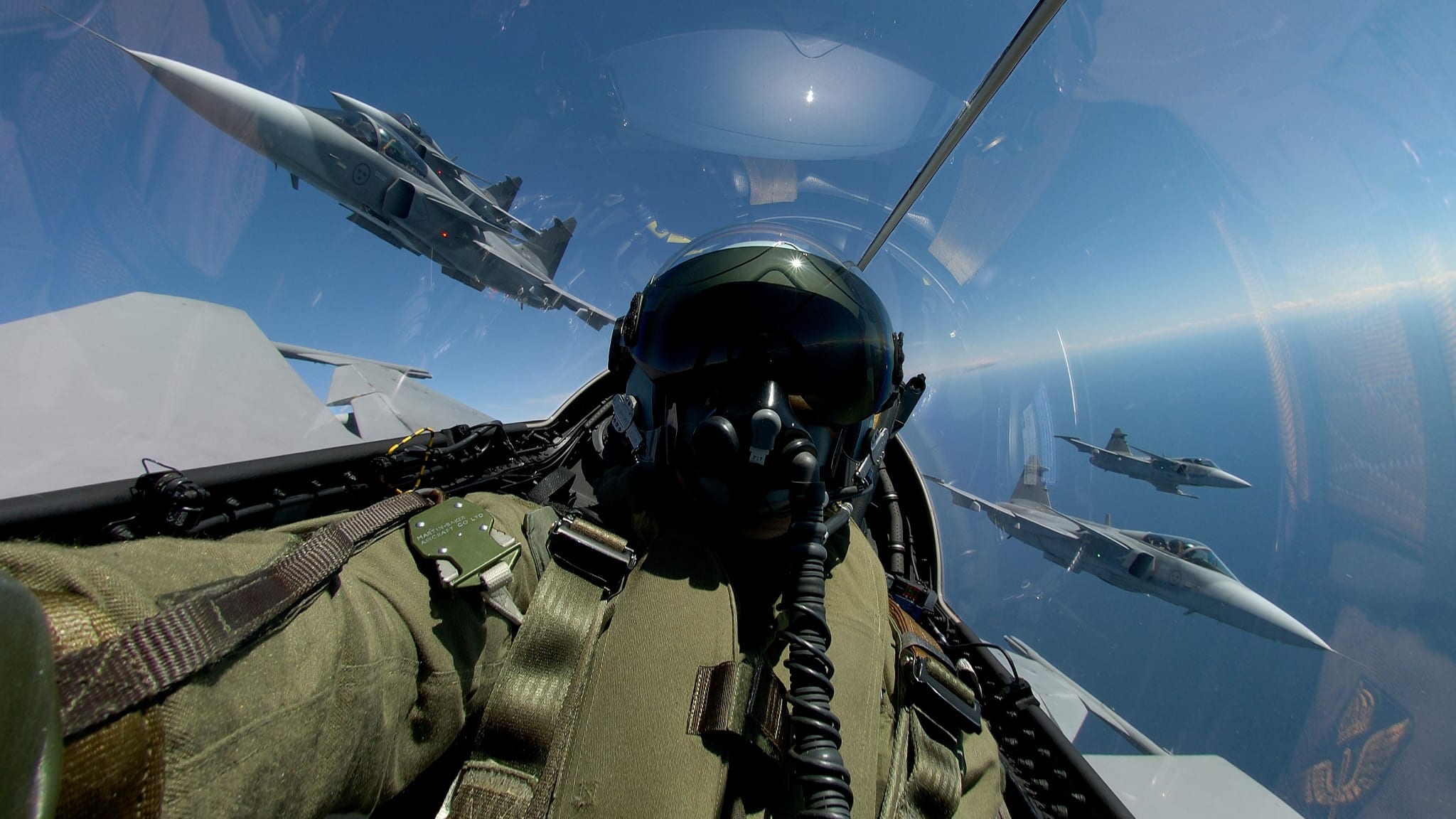
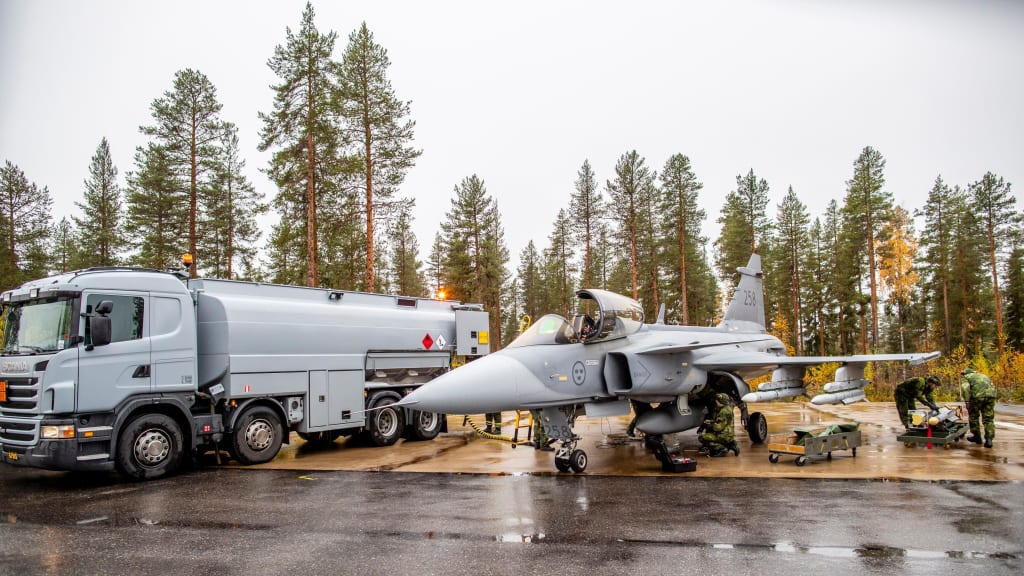
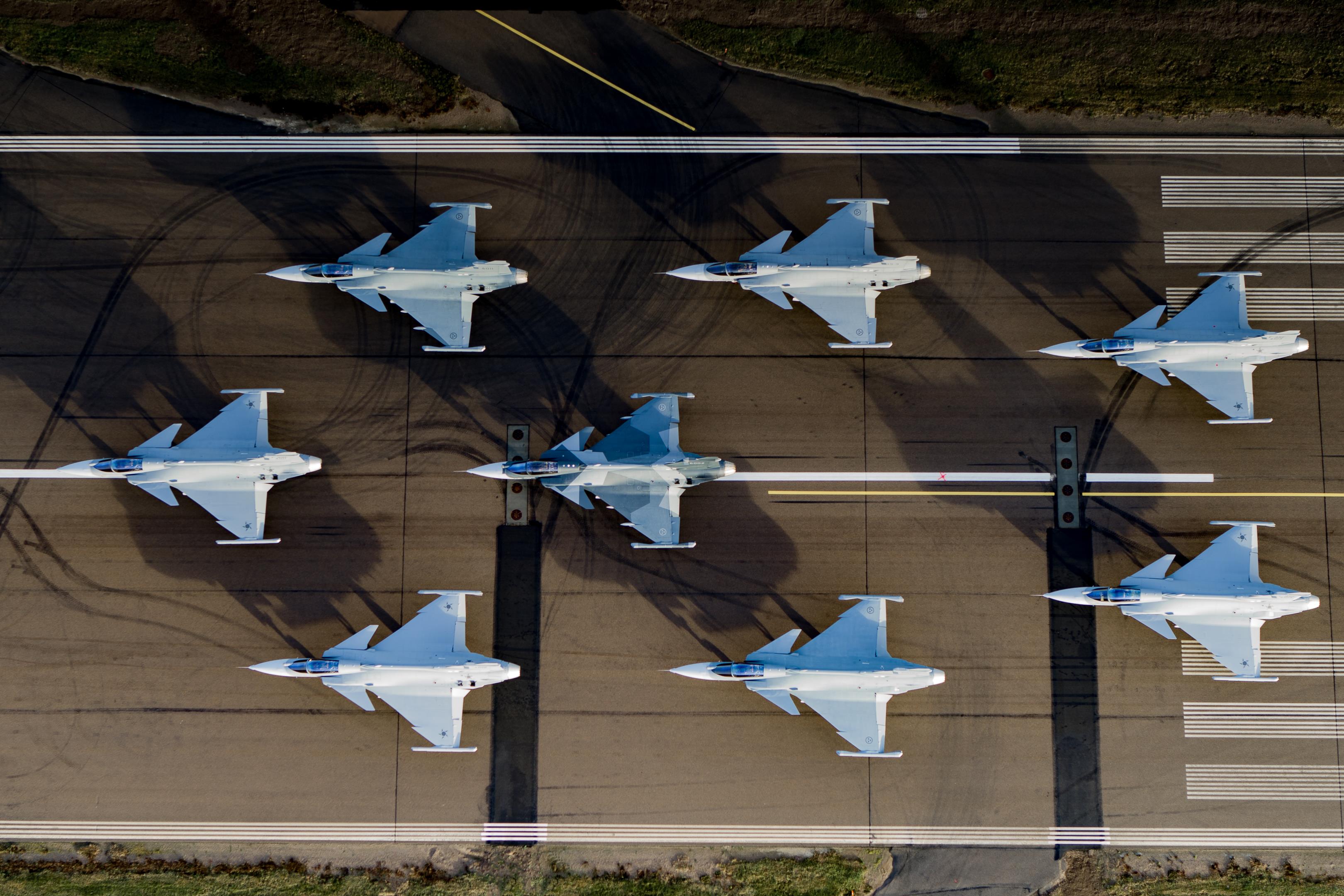
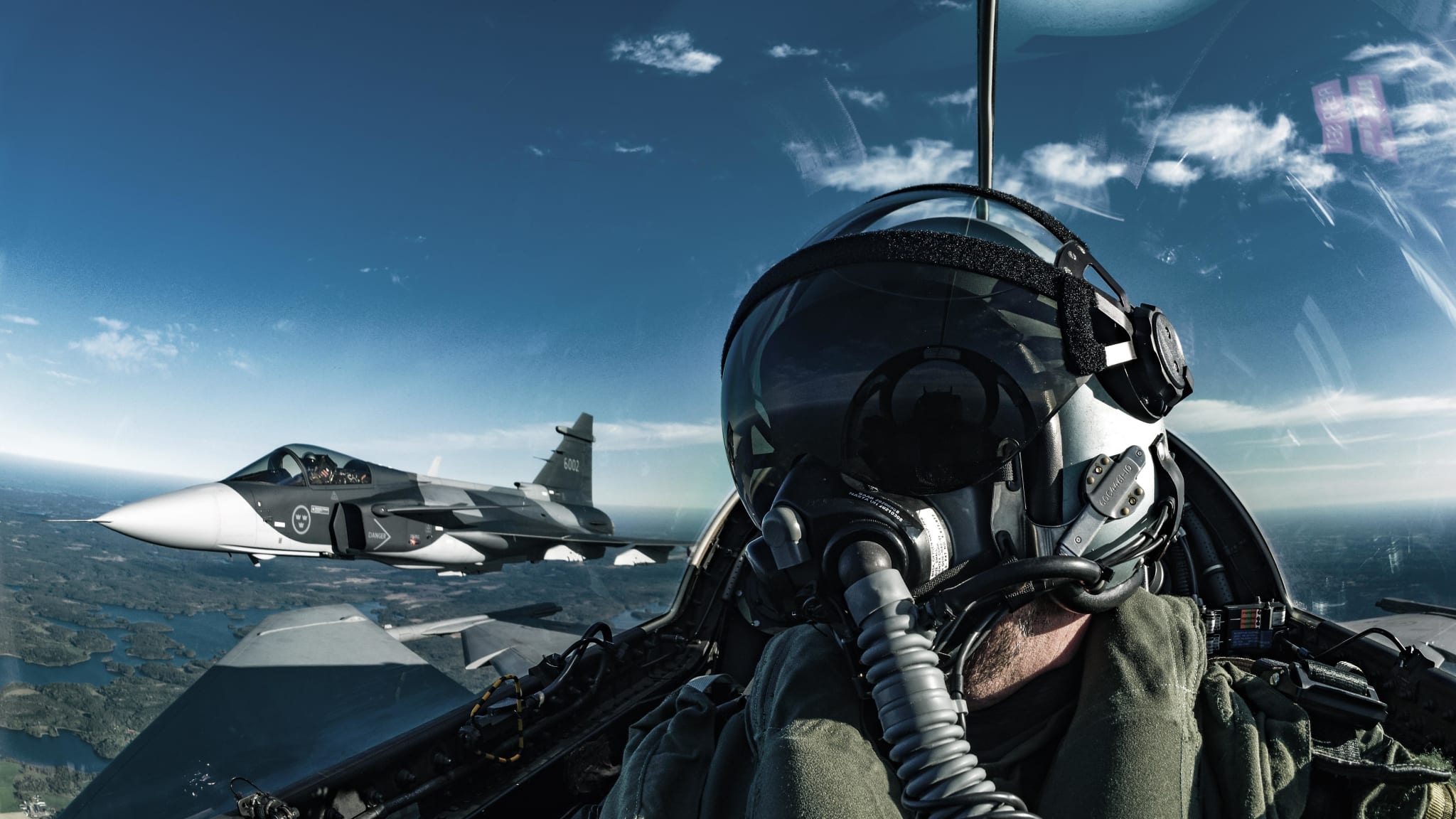
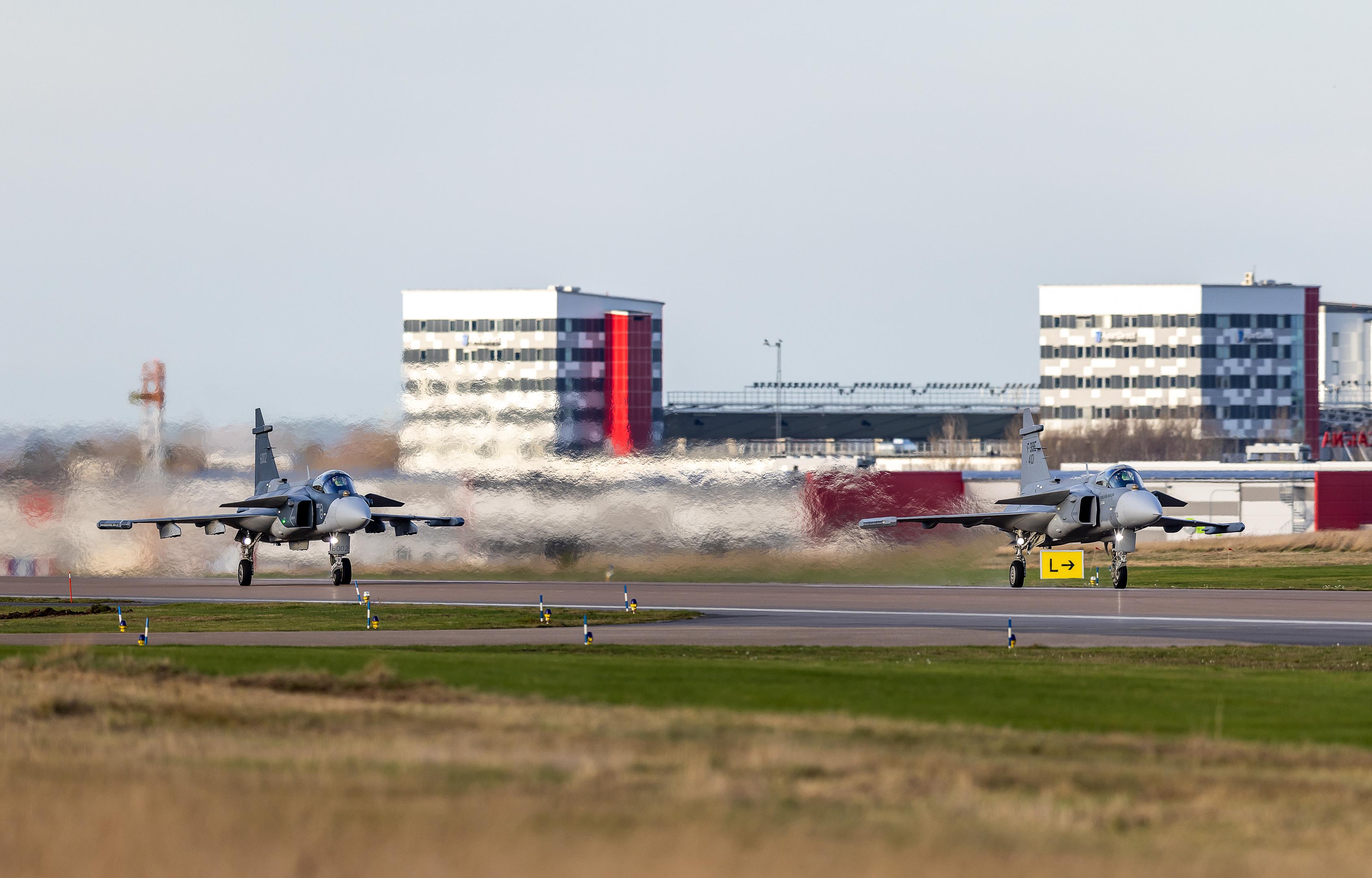
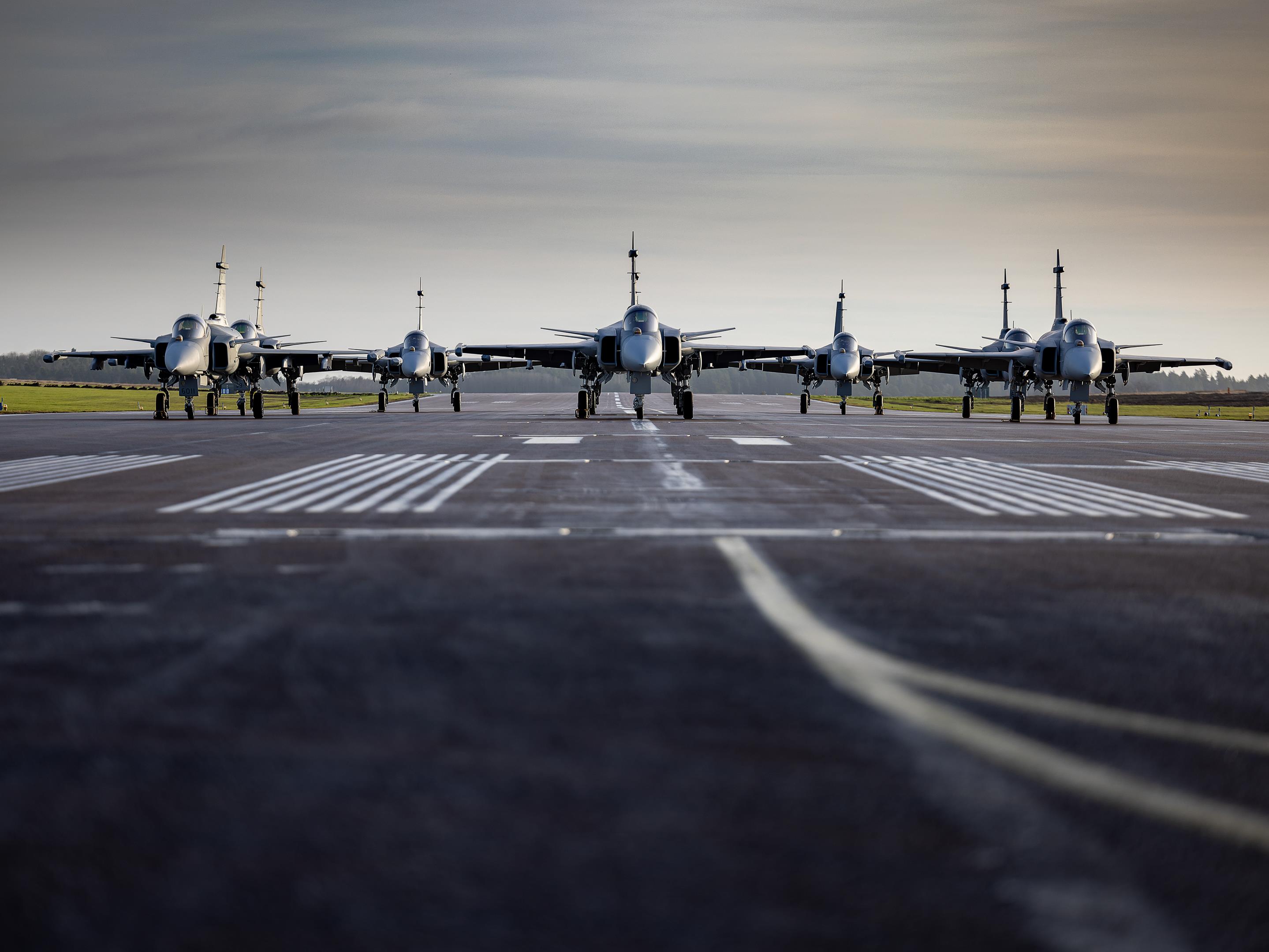
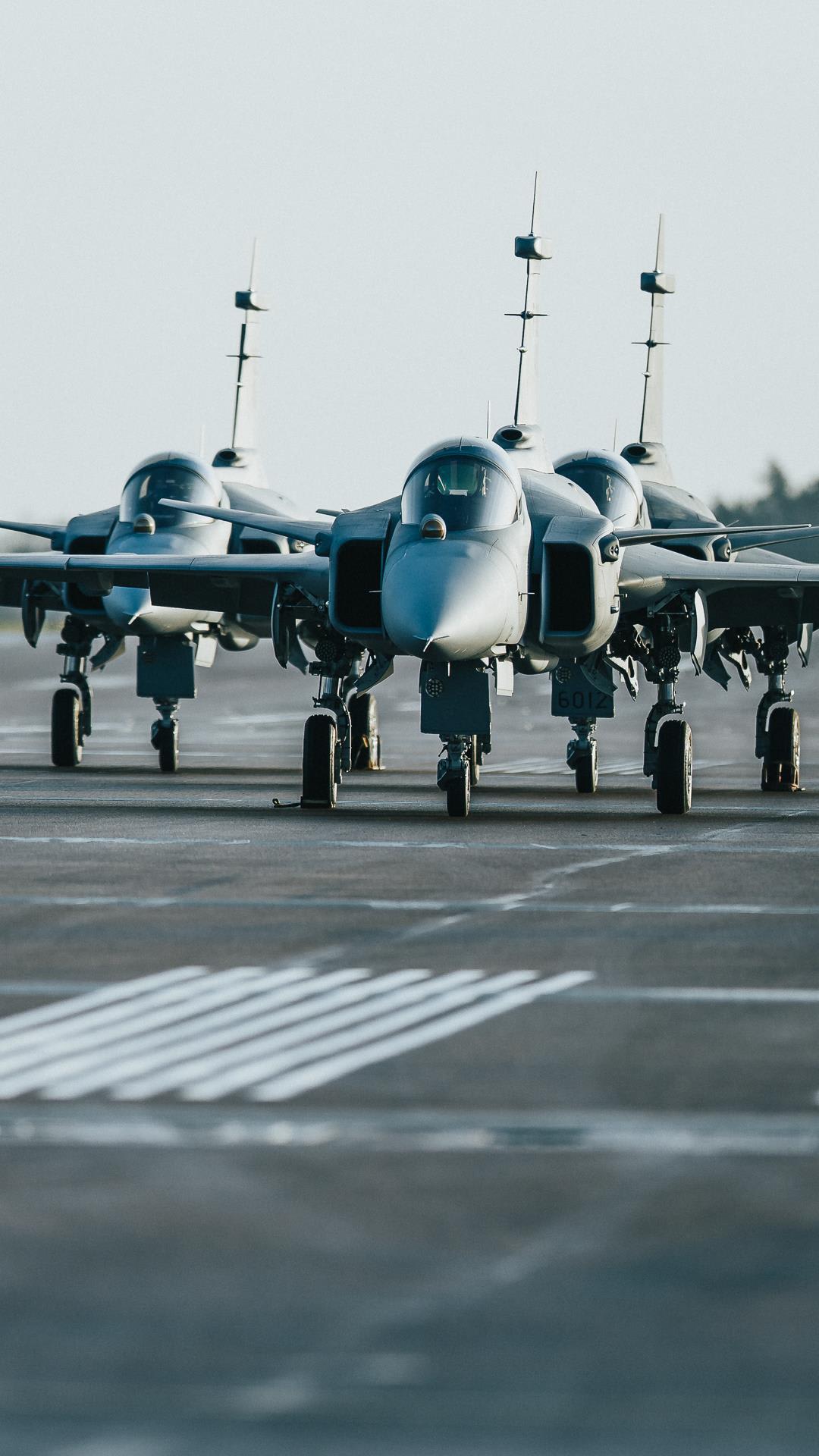
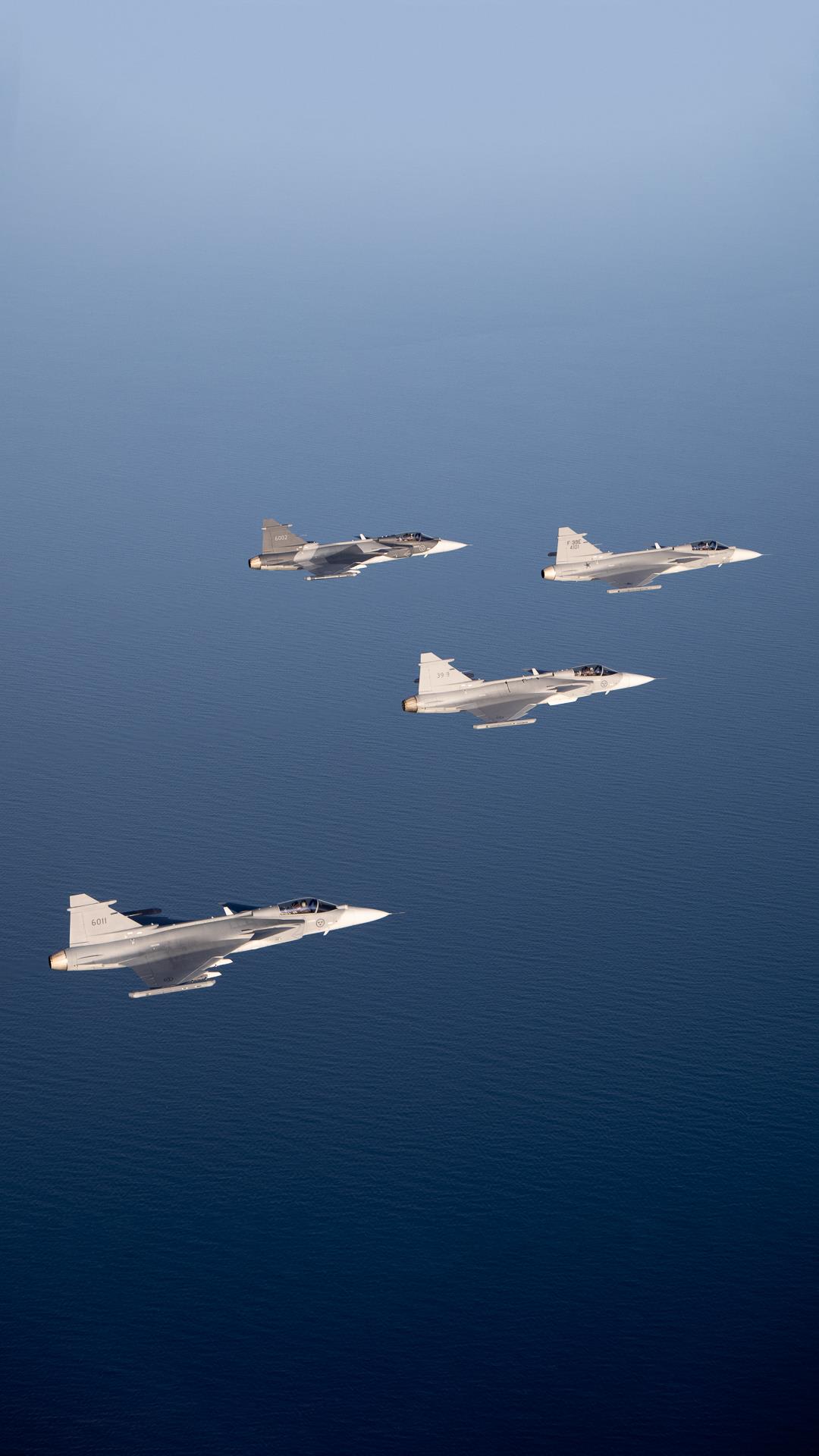
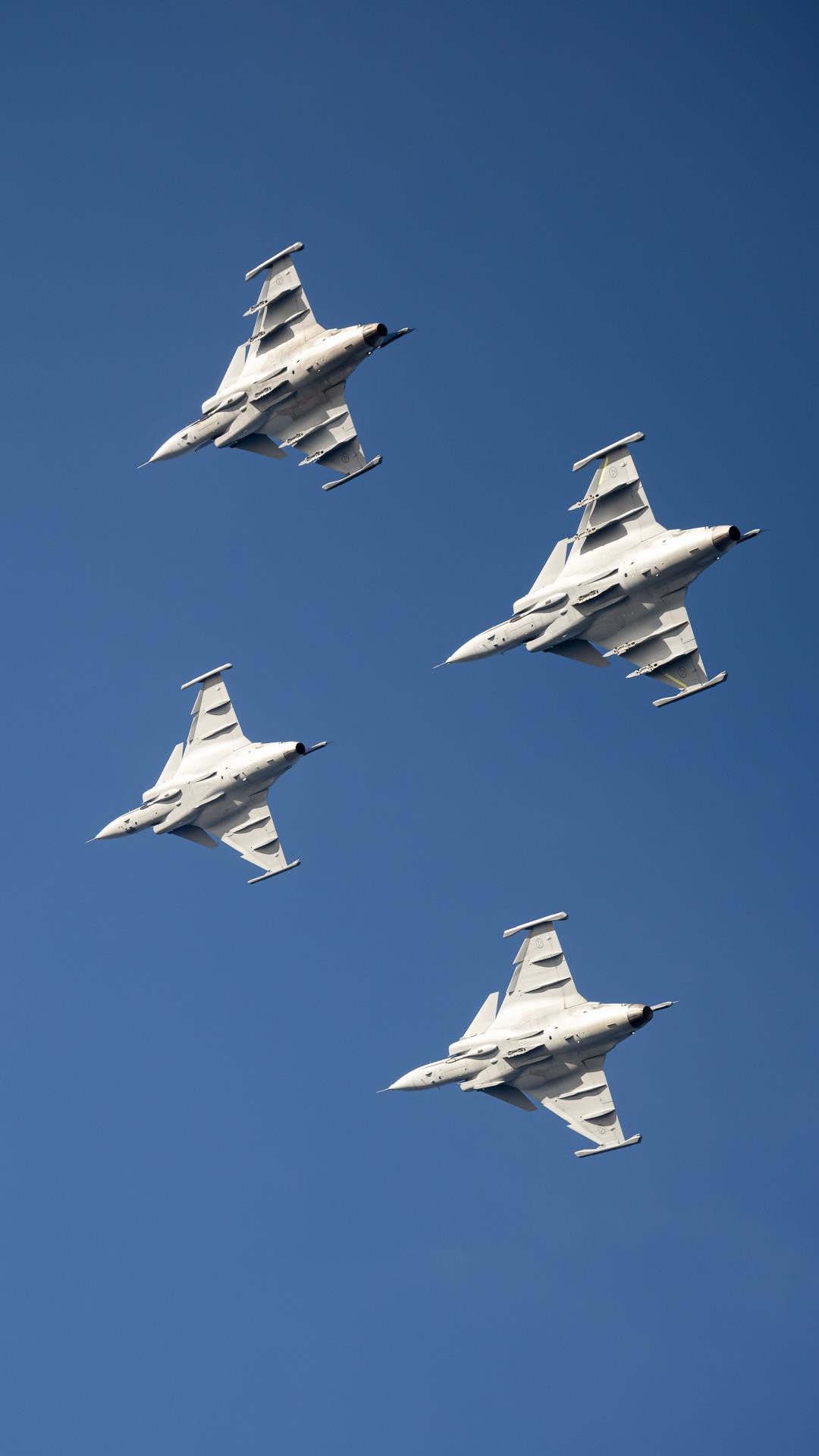
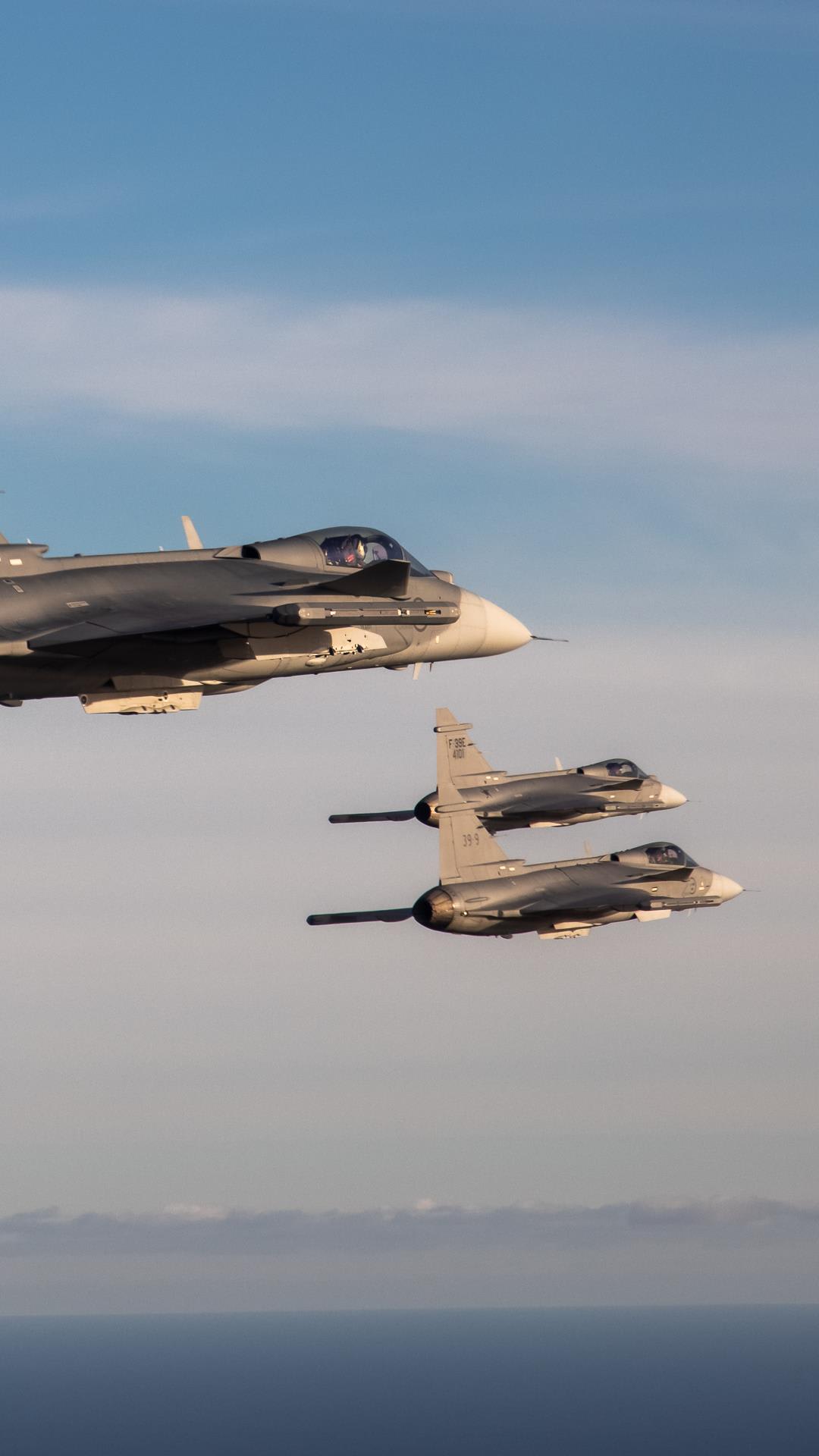

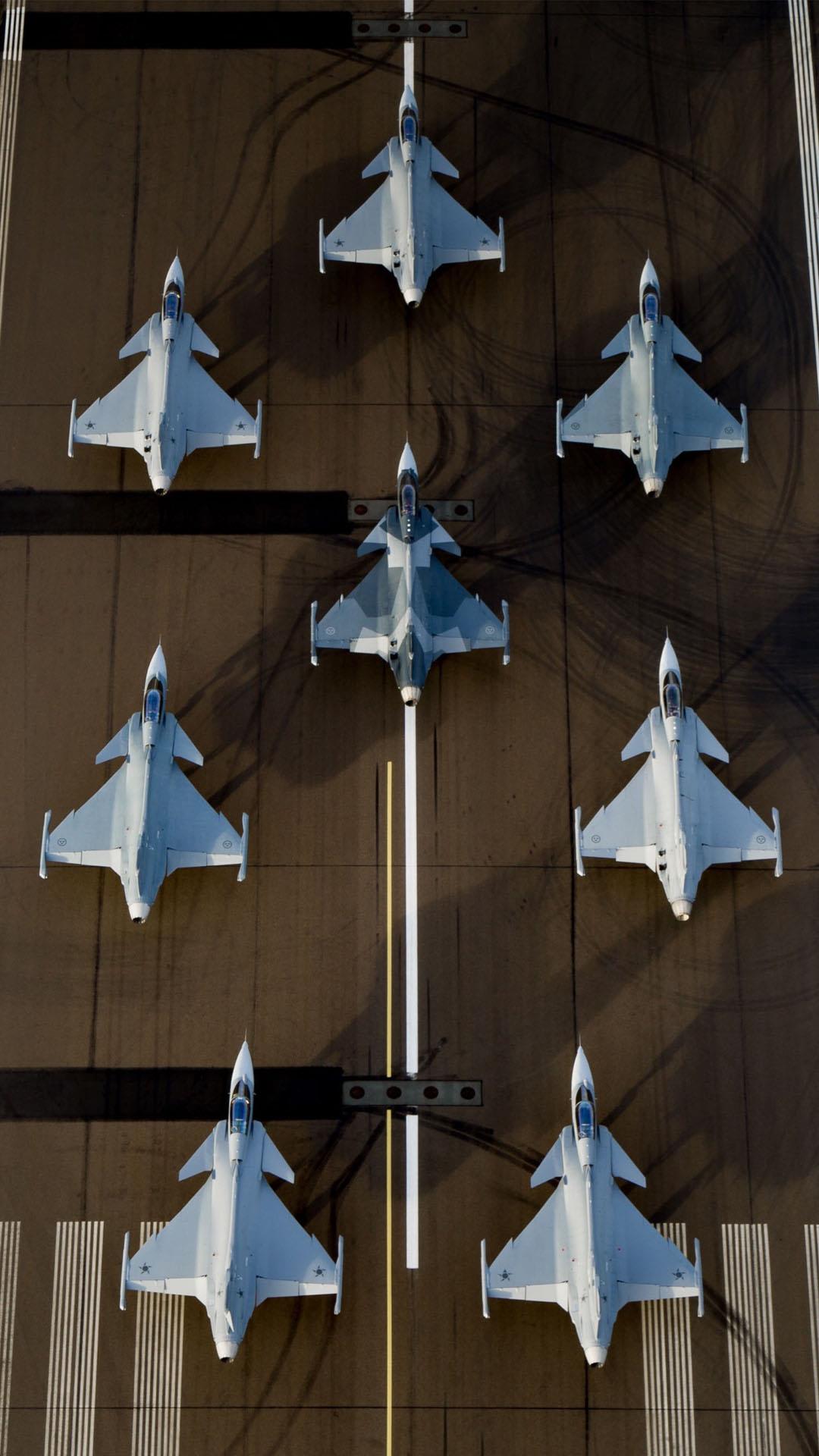
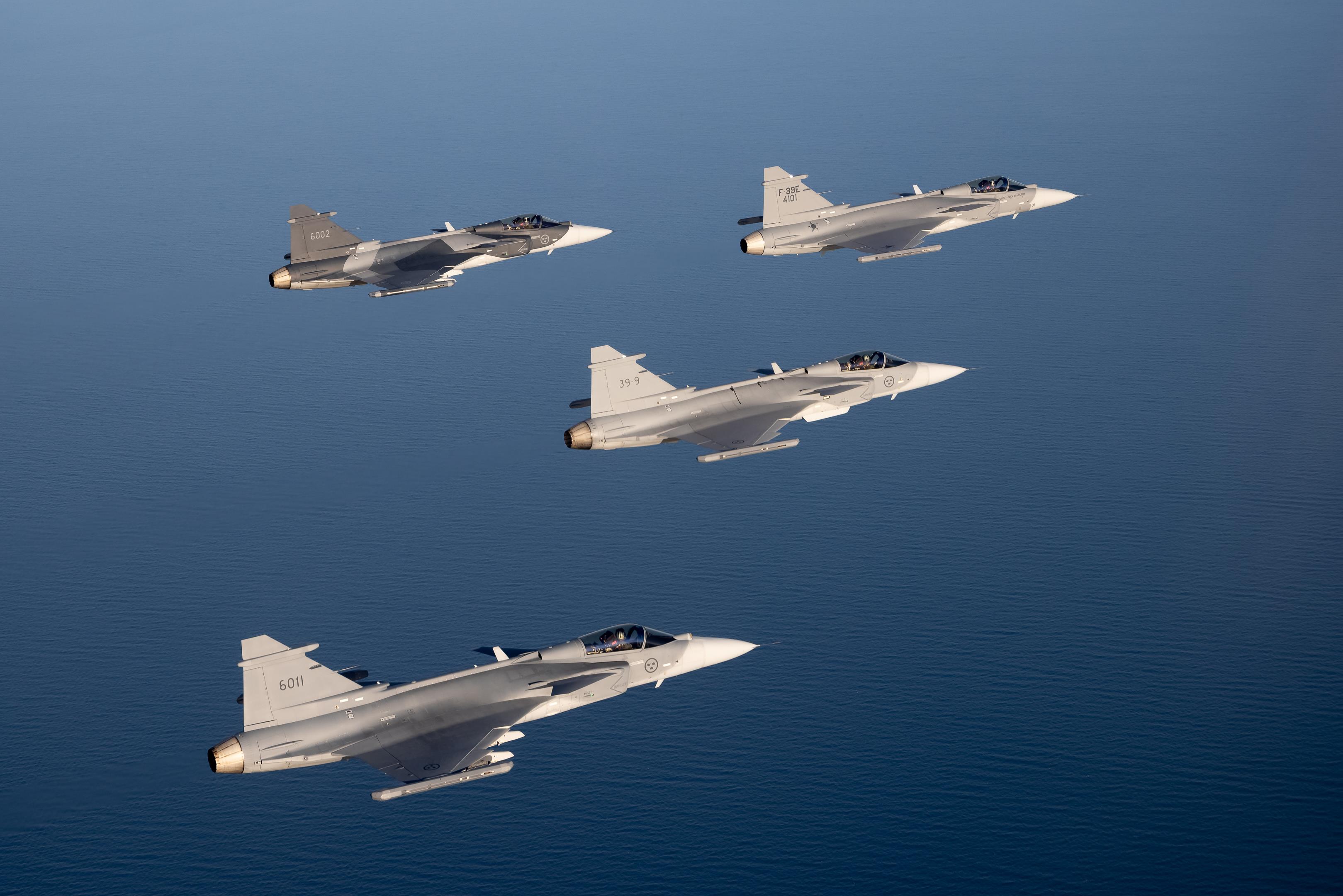
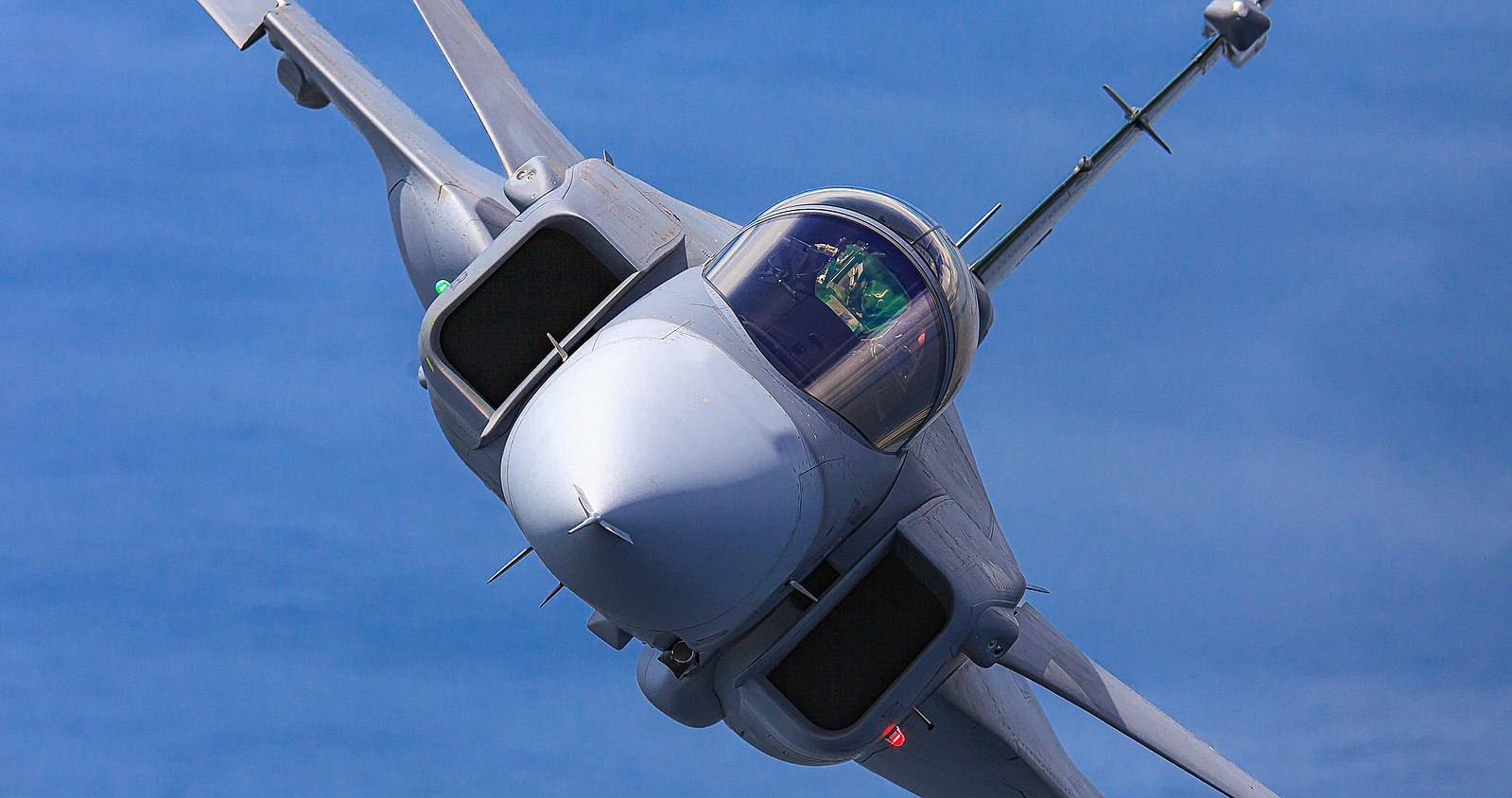
Saab JAS 39 Gripen posters in Russian, Arabic and Azeri:

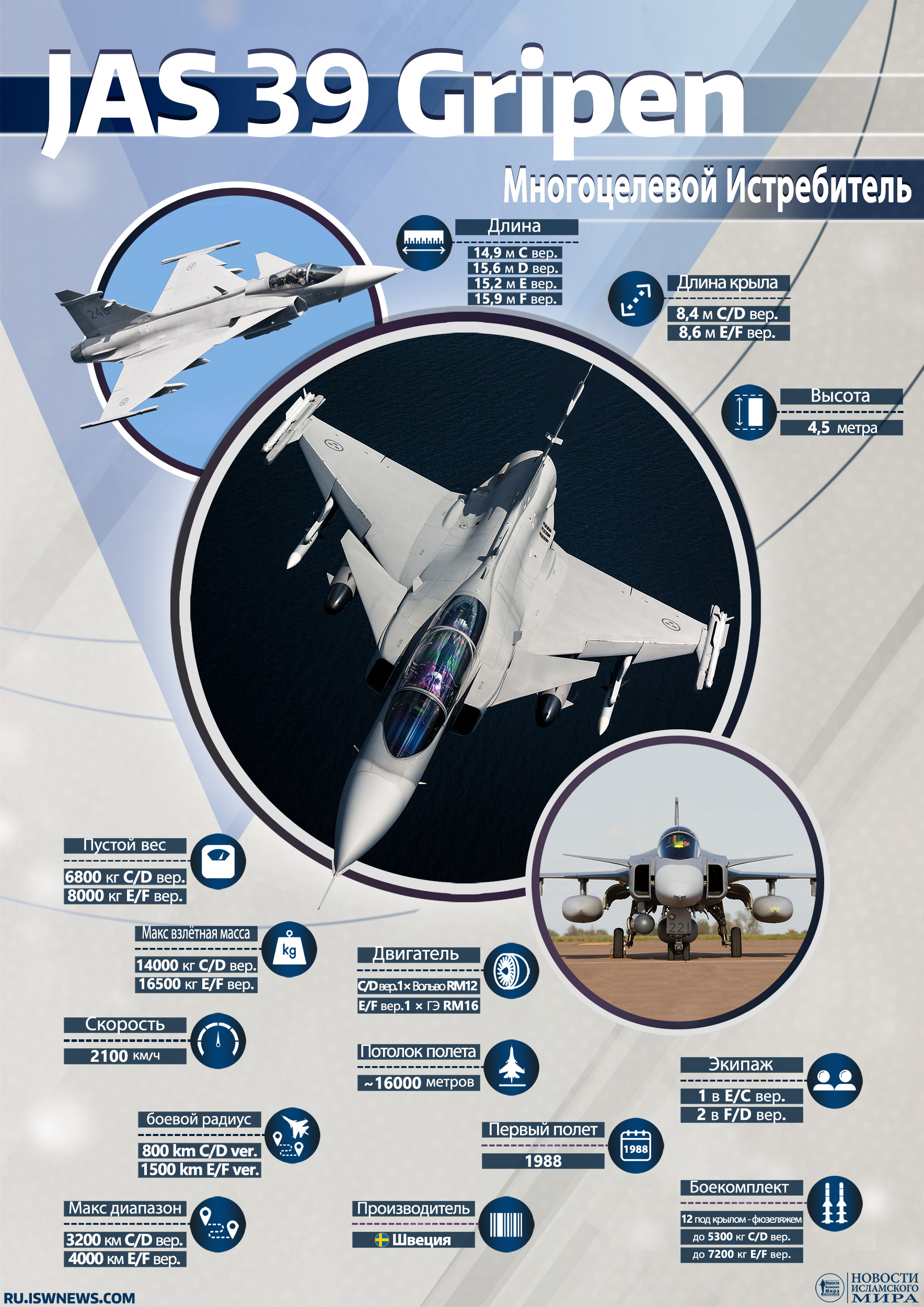
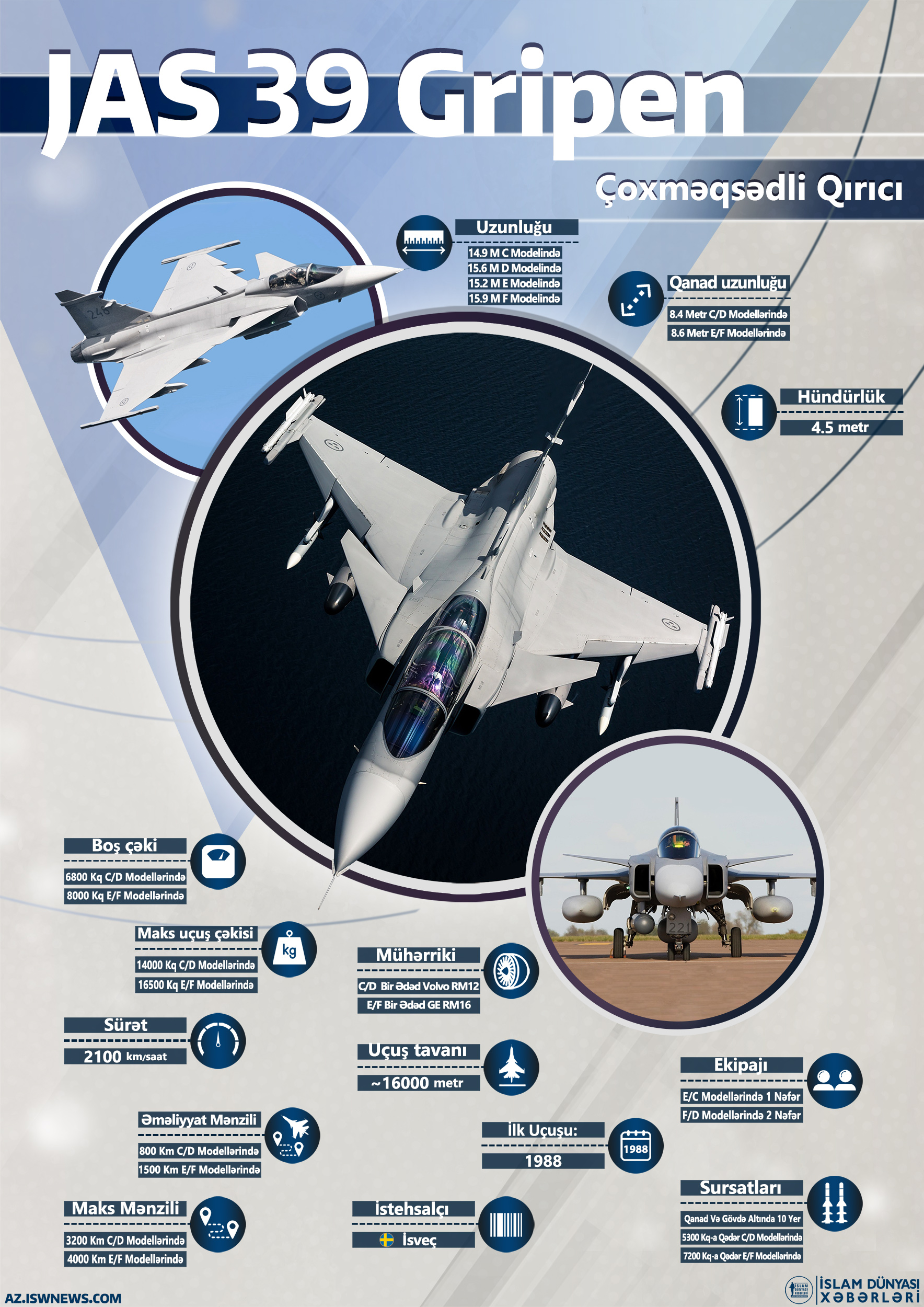
Source:
Saab JAS 39 Gripen
PS-05/A
How Gripen E’s AESA Radar Gets a Large Field of View
Gripen E-series

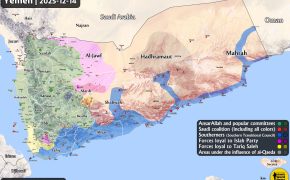
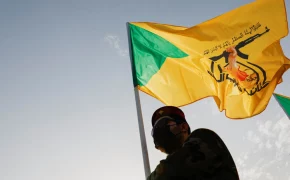

Comment